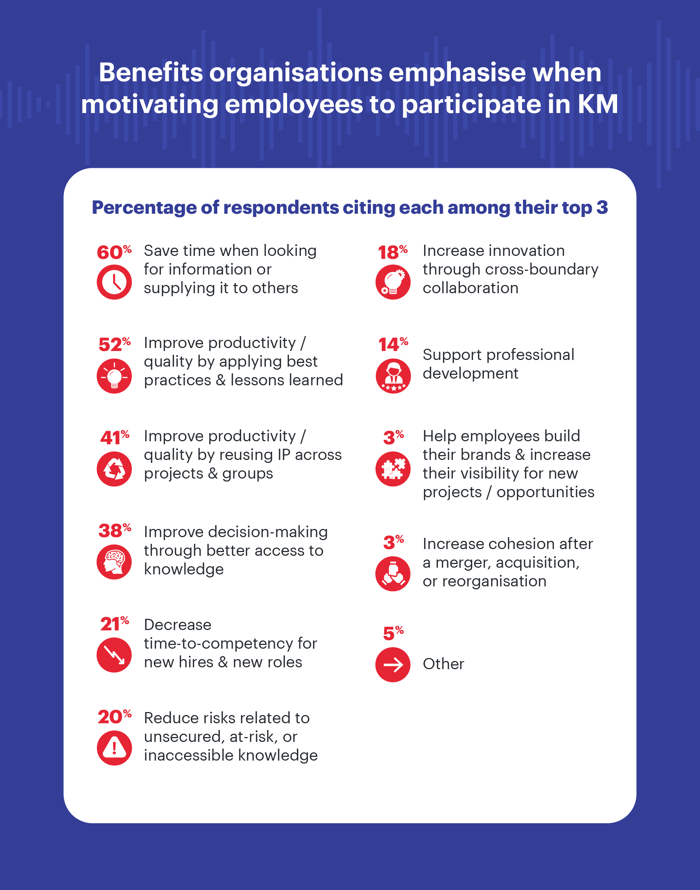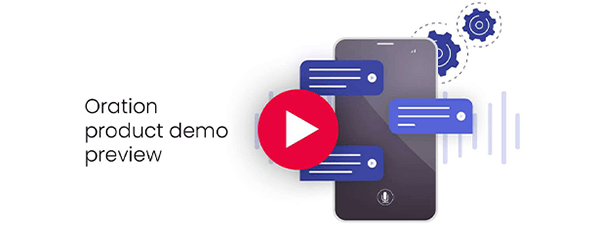Sir Francis Bacon was on to something when, in 1597, he put quill to paper and wrote the words: “Knowledge itself is power.” As an English philosopher, he was expected to deliver compelling insights and the fact his statement in Meditationes Sacres1 continues to be paraphrased more than 400 years later would suggest he succeeded on at least one occasion.
Knowledge is indeed power but as the 21st century gathers pace and organisations find themselves under increasing pressure to perform, a growing number of business leaders are realising another fact about knowledge. To identify opportunities, navigate change and maximise profits, they appreciate knowledge must be shared and an entire industry has risen to allow that to happen on a grand scale. The global knowledge management market is predicted to reach $1.1 trillion by 20262 as businesses aim to better collect, analyse, store and share their knowledge assets and intellectual property.
Nowhere is the thirst for knowledge management greater than in customer experience (CX). With 89% of today’s businesses competing primarily on the basis of CX3, it is no surprise organisations are looking for any advantage to put more smiles on more customers’ faces and increase loyalty. An Emplify study found that 86% of consumers will abandon a brand they trusted after only two poor customer experiences4.
To avoid adding to such statistics, smart businesses should be investing in knowledge management strategies that enhance staff productivity, deliver faster resolutions and ultimately elevate customer experience. Given knowledge is power, this comprehensive guide has been designed to provide executives and managers with the insights they need to strengthen their knowledge management systems and deliver positive change for both staff and customers.

Impact of poor knowledge management
Failure to manage knowledge can be incredibly costly for businesses as it negatively impacts customer experience in many ways.
- Lack of access to information: poor knowledge management puts hurdles in front of staff when they least need them. From interacting with leads and preparing for meetings to simply fulfilling daily tasks, it is essential that employees can find relevant information with ease and knowledge management solutions allows them to do just that.
- Slow decision-making: senior leaders need the capacity to make calculated and data-driven decisions and that starts with access to quality information. Inadequate knowledge management forces staff to waste time looking for resources to base judgements on and, in turn, leads to slower and inefficient decision-making.
- Poor customer onboarding: first impressions count, which is why businesses want to put their best foot forward when onboarding new customers. Inadequate knowledge management will make this process more difficult and risk the wrath of dissatisfied customers taking their business elsewhere.
- Repetitive processes: a poorly managed enterprise knowledge base is a fast-track to inefficiencies. Rather than forcing staff to repeat the same process every time they need to do so, automated knowledge management allows them to streamline their efforts, save time and improve engagement as they are less disenchanted by the repetitive nature of their roles.
- Knowledge silos: between different departments, services and even locations, businesses can be complex affairs. Without a proper KMS in place, they can also quickly become infested with silos that see knowledge quarantined, staff isolated from key knowledge and customers negatively impacted.

.png?height=2000&name=Benefits%20organisations%20emphasise-when%20motivating%20employees-to%20participate%20in%20KM_Mobile%20(1).png)
Source: The Most Effective Messages to Motivate KM Participation | APQC
How does knowledge management improve CX?
The implementation of a comprehensive and functional knowledge management system can benefit customer experience in multiple ways.
- Team alignment: what would you give to have a workforce that communicates and collaborates, trusts each other and is aligned towards a common goal? Sounds good, doesn’t it? A quality KMS can make all this happen as it ensures team members are on the same page at all times. By having access to a single, up-to-date database of information, employees know who is responsible for what and the overall goal of a given initiative. This alignment also leads to improved employee engagement, which has been proven to subsequently inspire better customer experience.
- Streamlined processes: a goal of any organisation should be to find the fastest and simplest solutions for customer concerns and removing friction for employees is a critical step towards achieving that. By creating a repository of knowledge, different teams can follow the same paths to access information and have clear guidance as to how to tackle any given scenario. It may be a sales team having up-to-date information on individual customers or contact centre staff being able to access refund policies at the touch of a button. And the real winners? Your customers.
- Self-service options: studies have shown that 81% of today’s customers want to take care of matters themselves before reaching out to a service representative5. Given that, customer-facing knowledge management systems are playing a key role in boosting CX. Be it a company’s knowledge bases, FAQ pages or other content, many customers want access to self-service portals that allow them to solve their problems without much assistance. Then there is the bonus of freeing up time for staff to focus on more complex and rewarding tasks.
- Promotes knowledge sharing: littlies are often told ‘sharing is caring’ and knowledge management systems reinforce that message to employees. Putting a KMS in place makes it easier for teams to not only share insights and advice with each other but bolster their CX offering. Sales staff can upload experiences of dealing with prospects or specific questions they have been asked. Marketing teams can share crucial information such as customer personas or current trends. It’s all about creating a culture of sharing, caring and delivering exceptional CX.
- Improve first-response time: few things frustrate customers more than being passed between multiple contact centre agents or, worse, being forced to call back due to incorrect information. They want accurate resolutions the first time and that is where a quality knowledge management system shines. By putting the right knowledge in one place, agents are not forced to trawl through multiple files and folders while a customer is on hold or risk handing them inconsistent information. Simply open the knowledge base, type the customer question or issue and get the right detail right away.
-4.png?width=700&height=913&name=Which%20do%20you%20think%20is%20the%20most%20valuable-use%20of%20AI%20in%20the%20Contact%20Centre-%20(1)-4.png) Source: Artificial Intelligence in the Call Centre: Survey Results (callcentrehelper.com)
Source: Artificial Intelligence in the Call Centre: Survey Results (callcentrehelper.com)
How do you implement a knowledge management system?
Successfully implementing a knowledge management platform requires the right combination of tools, processes and technical expertise.
- Establish your goals: start your KMS journey with a clear vision of what you want to achieve. After identifying and documenting any problems that need resolution or drivers for change, write a list of short- and long-term goals to help set parameters for the initiative. Knowledge management can cover various areas including improving self-service, customer onboarding or ticket deflection so it pays to know exactly what the end goal is.
- Develop a change strategy: implementing a new knowledge management solution is not a case of simply using a fresh technology or process. It requires organisation-wide change and staff will have to embrace new ways of capturing and sharing knowledge. It is not uncommon for some team members to resist such change and that is why it is crucial to liaise with employees across all business units to gauge feedback and encourage knowledge-sharing behaviours.
- Identify advocates: enhancing knowledge management may seem like a great idea to you but it is essential to bring leadership teams along for the ride. Pinpoint senior executives or staff who will be visible advocates for the initiative and involve them in the rollout. Their active participation will show the rest of the organisation how important it is and inspire other staff to take the change process as seriously as them.
- Assess current capabilities: you have established your goals, developed a change strategy and identified advocates. It is now time to assess the current state of knowledge management within your business. This formal assessment should include an overview of any tools or systems already in use and recommendations for how to best close the gap between the current situation and desired state. Always keep the end-goal - improved customer experience - at the forefront of mind.
- Build an implementation road map: a common reason for implementation failure is a lack of an overarching document to guide the process. By taking the time to create a roadmap, you will be able to illustrate the step-by-step process and scope of the project including key milestones. Put a particular emphasis on demonstrating early wins so you can bolster enthusiasm among stakeholders and garner ongoing support.
- Implement … and monitor performance: now comes the fun part! Launching an implementation can be stressful but never lose sight of the fact that it is equally exciting to create such change. Celebrate short-term wins and determine how to measure the system’s effectiveness. Capture a ‘Before’ snapshot prior to implementation to compare with the ‘After’ landscape to see how efficiencies – and customer experience - have improved post-launch.

Summary
Knowledge management is no longer a maybe but rather a must for businesses hoping to achieve customer experience excellence. Implementing the right systems will go a long way to putting accurate and pertinent information in your employees’ hands faster than ever and, in turn, create an environment where customers are happier, increasingly loyal and more likely to spread the word about why they value your service.
Choosing where to spend money when investing in customer experience can be difficult. Discover the best areas to focus on in CX this year and why technology is the key to achieving customer experience excellence.
References
1. Knowledge is Power - PubMed
2. Global Knowledge Management Market Trajectory & Analytics 2021-2027
3. 75 Must-Know Customer Experience Statistics to Move Your Business Forward
4. 86 Percent of Consumers Will Leave a Brand They Trusted After Only Two Poor Customer Experiences
5. 14 Stats That Make the Case for Self-Service in 2022







